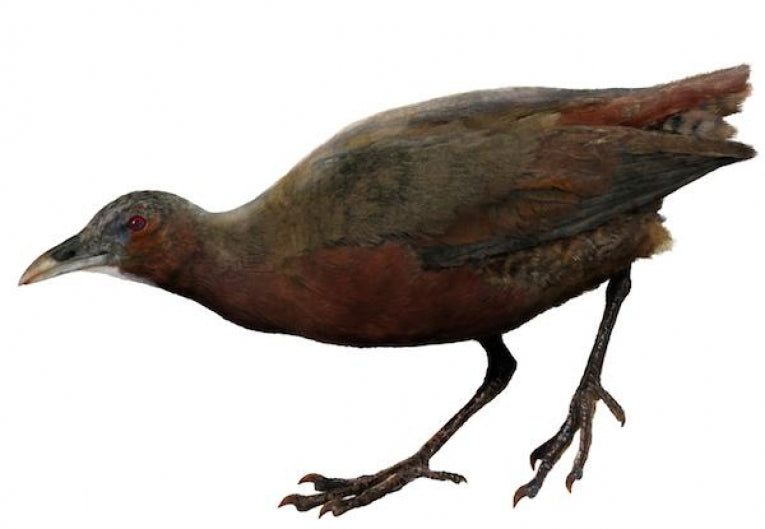Mentocrex beankaensis illustration by Velizar A. Simeonovski, Copyright: The Field Museum
The urgency of saving the world's remaining fragments of primary forest has been highlighted by recent discoveries in the Madagascan Beanka Forest. Even as endangered forests are shrinking worldwide, researchers are continuing to document new species in them, which emphasizes the dangers of continued habitat destruction.
Scientist in the journal Zootaxa have described a completely new species of Malagasy rail, Mentocrex beankaensis, a ground-dwelling bird that has made its home in these spectacular dry forests. The bird has long been well-known to locals, but this is the first time it has been confirmed as a separate species.
The Beanka area was surveyed by Malagasy and US researchers in 2009, who were seeking to more fully document the biodiversity of this 'island continent', off of the coast of east Africa. The Beanka Forest is a dry hardwood forest, known for its bizarre interspersing of towering trees and razor-edged limestone spires - known locally as 'tsingy'. The unique combination of karst limestone landforms, and intimately adapted wildlife, have led to a 25-year lease being granted for its conservation, to the NGO Biodiversity Conservation Madagascar (BCM)
It is only now, by the combined efforts of Chicago's The Field Museum (through its Pritzker Laboratory for Molecular Systematics and Evolution) and the University of Antananarivo in Madagascar, that the new species can be confirmed. Studies of both physical aspects, such as shape and plumage, and the molecular genetics of the bird's DNA, helped scientists to distinguish this species from a related Mentocrex rail in the east of the island.
With 97% of the original dry forest gone already, according to the WWF, the efforts of BCM in protecting this area, and reducing the twin threats of illegal logging and hunting, are crucial. That means addressing the issue of a secure livelihood for the locals - and so helping to avoid their need to exploit the forest for resources.
Mr. Aldus Andriamamonjy, the director of BCM, has said that ''We have taken an approach to the conservation of the Beanka Forest resting on working in unison with local people to fulfill aspects of their economic and development needs and bestowing a sense of natural patrimony of the organisms that live in their forest.'' It seems global gems of biodiversity, such as these, will only be saved by acting, and thinking, in an intimately local way.










